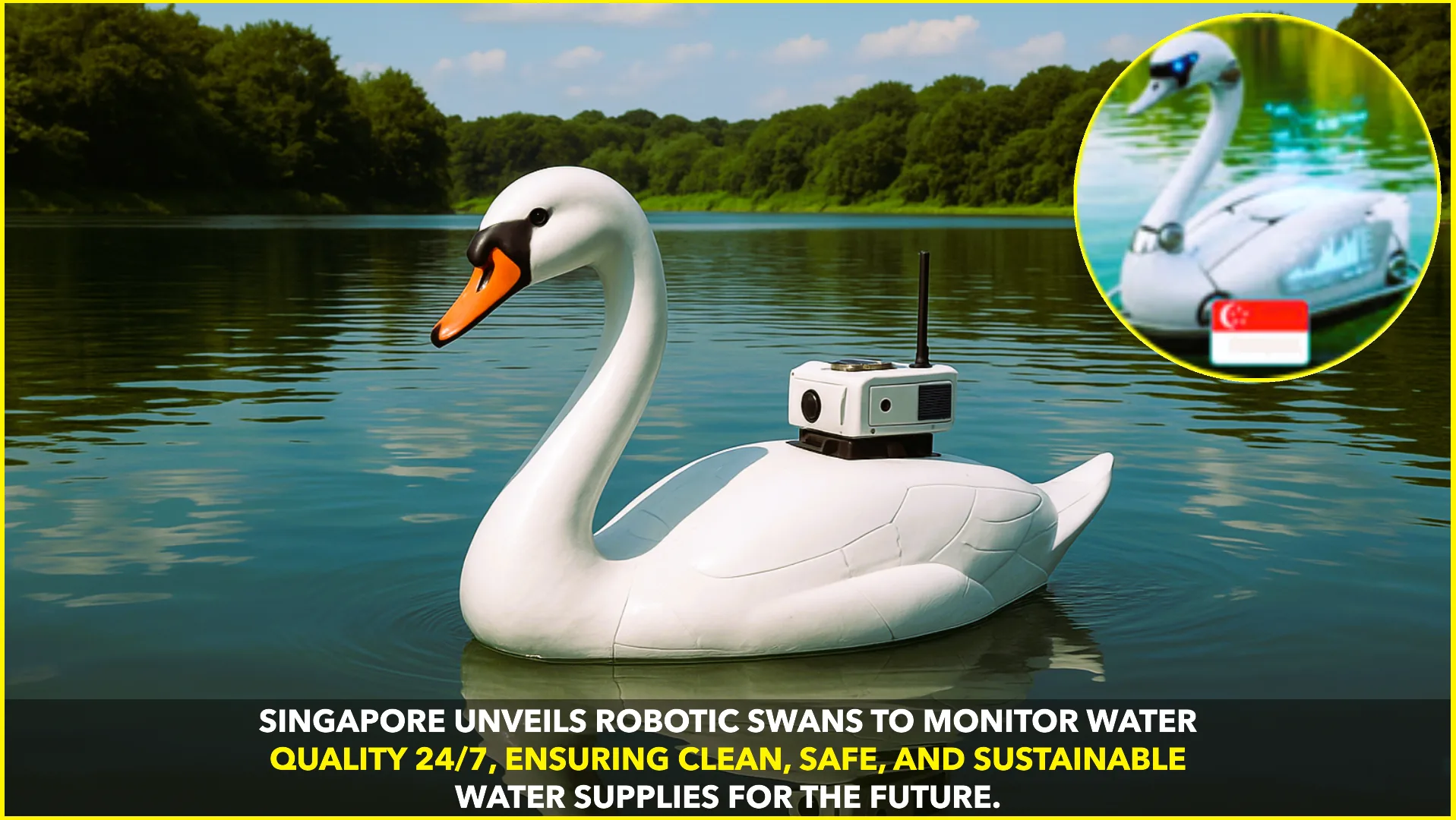Singapore has taken an innovative step in water management by deploying robotic swans across its reservoirs. These graceful, lifelike machines are not just eye-catching but serve a critical role in safeguarding the city-state’s most precious resource — water. Developed under the Smart Water Assessment Network (SWAN) project by the National University of Singapore (NUS) and the Public Utilities Board (PUB), the robotic swans represent a blend of cutting-edge technology and environmental sustainability.
A High-Tech Solution in Disguise
The robotic swans are carefully designed to mimic the appearance and movements of real swans. With their elegant gliding motions, they blend seamlessly into the reservoir environment without alarming wildlife or drawing unnecessary attention from the public. This natural disguise allows them to carry out vital monitoring work without disrupting the delicate ecosystem.
Beneath their sleek exteriors lies advanced engineering. Each swan is fitted with sensors that measure important water quality indicators such as:
- pH levels – to monitor acidity and ensure balance for aquatic life.
- Dissolved oxygen – critical for the survival of fish and other organisms.
- Turbidity – measuring water clarity, which reflects sediment and pollutant levels.
- Chlorophyll – an indicator of algae growth.
- Algae concentration – essential for detecting early signs of harmful blooms.
The collected data is transmitted wirelessly in real-time to water authorities. If irregularities are detected, officials can act swiftly to prevent any potential health or environmental risks.
Why Singapore Needs Robotic Swans
Water security has always been a top priority for Singapore. With limited natural freshwater resources and heavy reliance on imported water, the country has consistently sought innovative methods to safeguard its reservoirs.
The introduction of robotic swans ensures 24/7 monitoring, a significant upgrade from traditional manual testing, which can be time-consuming and less responsive to sudden changes in water quality. By automating the process, authorities can quickly detect pollution, harmful algal blooms, or other anomalies that could threaten public health and the ecosystem.
Dr. Tan Chorh Chuan, a leading figure in Singapore’s research community, highlighted that projects like SWAN not only strengthen water security but also demonstrate how technology can harmonize with nature.
Sustainability at the Core
Unlike industrial-looking monitoring devices, robotic swans maintain the natural beauty of the reservoir landscape. This clever approach reduces visual pollution and avoids disturbing both human visitors and wildlife. The swans are battery-operated and designed with efficiency in mind, making them an eco-friendly solution that aligns with Singapore’s broader sustainability goals.
Moreover, the use of real-time data allows for predictive water management. Instead of waiting for problems to arise, PUB can forecast potential risks and take preventive action. This proactive model ensures cleaner water for millions of residents and supports Singapore’s ambition to be a global leader in sustainable urban solutions.
Global Relevance
As climate change intensifies and freshwater scarcity becomes a worldwide concern, Singapore’s robotic swans could inspire similar projects internationally. Countries facing water challenges might adopt this blend of biomimicry and technology to manage their reservoirs, lakes, or rivers more effectively.
Experts suggest that such systems could also be integrated with artificial intelligence in the future, enabling automated decision-making and even predictive environmental modeling.
A Symbol of Innovation
For Singaporeans, these robotic swans are more than just machines. They are symbols of how innovation, science, and sustainability can come together to address real-world problems.
By disguising technology as part of nature, Singapore shows that environmental protection doesn’t always require intrusive measures. Sometimes, the smartest solutions are those that quietly work in the background — just like these robotic swans gliding gracefully across the water.










